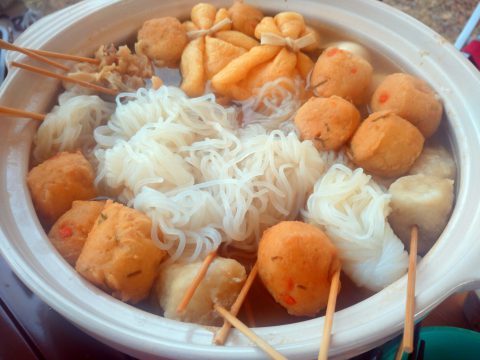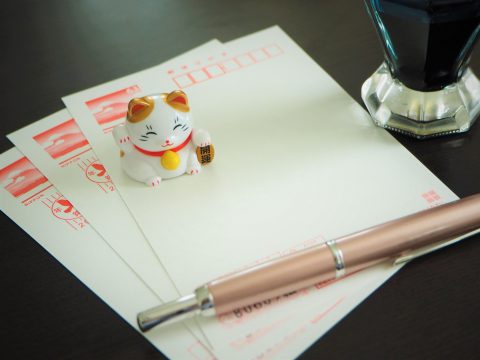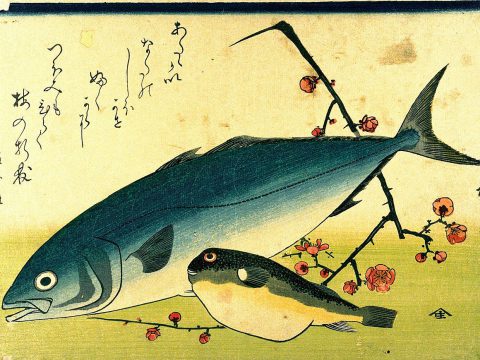Japanese strawberry varieties
JAPANESE FOODS
04.03.2022

The cold winter months are when the strawberry season begins. These glistening jewels come in all shapes and sizes and are grown across the country. Japanese strawberries have been bred to not only look beautiful and perfect but taste delicious, so do give them a try!
You may have noticed that the Japanese go crazy for these strawberries. According to the Japan External Trade Organization, the Japanese are the biggest consumers of raw strawberries globally! Most strawberries are consumed domestically, although some are shipped to nearby Asian countries.
Strawberries are crucial in Japanese Christmas cakes (a shortcake adorned with strawberries) and the Japanese confectionery Ichigo daifuku いちご大福 (mochi wrapped strawberries). Of course, they’re also delicious on their own!
There are over 300 varieties in Japan, with new ones introduced almost every year thanks to cultivation technologies. Depending on where you’re located, you may notice local strawberries not available elsewhere.
Let’s take a look at the different types of strawberries.
Tochi otome (とちおとめ)
A well-balanced strawberry, Tochi otome is produced mainly in Tochigi prefecture but grown in Aichi and Ibaraki. It was developed in 1996 and was the first strawberry variety developed in Japan. It tends to be more affordable than the other varieties.

Benihoppe (紅ほっぺ)
Benihoppe is produced in Shizuoka prefecture. They have an elongated shape and are slightly tart. The name derives from its red color (beni 紅) and the word for cheeks (hoppe ほっぺ).

Amaou (あまおう)
The Amaou name is an acronym for akai 赤い (red), marui 丸い (round), ookii 大きい (big) and umai うまい (tasty). It’s produced in Fukuoka prefecture and is known as “the king of strawberries.” The berries are big, plump, and juicy, just like its name.

Saga honoka (さがほのか)
Saga Honoka was developed in Saga prefecture and is mainly grown in Kyushu (southern Japan). It has a conical appearance, red body, and white flesh. It also goes by other names such as “Honoka” and “Honoka Ichigo.”

Hatsukoi no Kaori (初恋の香)
A striking white berry, Hatsukoi no Kaori (literally “the scent of first love), may look unripe and inedible, but actually, they’re sweet, rich, and fragrant. The berry is white both outside and inside, but the seeds are red. They were developed by the seed and plant supplier Miyoshi Agri-Tech Group of Yamanashi prefecture. They’re also expensive and hard to find, about 500 yen or more per berry.

Kayoko Hirata Paku
Kayoko Hirata Paku is a food writer, translator, and bagel person. Growing up in Japan and the U.S., she currently resides in Tokyo with her peanut butter addicted husband, a very hungry baby, and many half-dead plants.
Read previous articles by the writer
Read latest articles
KEYWORDS
- # PICKPICK
- # Resume
- # alcohol
- # Rice
- # Soup
- # winter food
- # Fast Food
- # seafood
- # spicy foods
- # raw food
- # fermented food
- # Transportation
- # MEAT
- # Edo culture
- # suits
- # clothing
- # drink
- # fish
- # seasoning
- # Japanese New Years Foods
- # Toshikoshi soba
- # Osechi Ryori
- # Ozoni
- # Christmas
- # Japanese fusion pasta
- # Wafu Pasta
- # Japanese Hot Pot
- # なべ
- # 鍋
- # Miyazaki
- # Chicken Nanban
- # Karamen
- # Autumn Wagashi
- # Mushi-yokan
- # Imo-yokan
- # Japanese Autumn Fruits
- # Autumn
- # Vending Machine
- # fall
- # dango
- # Chestnut rice
- # saury
- # Mushroom
- # Rice vinegar
- # Japanese condiments
- # 調味料
- # Sake
- # Mirin
- # Soy sauce
- # Japanese Noodles
- # Udon
- # Ramen
- # Yakisoba
- # Soba
- # Japanese Seaweed
- # 海藻
- # かいそう
- # Payslip
- # Training
- # Japanese summer foods
- # 和菓子
- # Wagashi
- # ryokucha
- # 夏
- # 飲み物
- # Ramune
- # ラムネ
- # Pokari Sweat
- # ポカリスエット
- # Calpis
- # カルピス
- # Mugicha
- # ume
- # 梅
- # うめ
- # umeshu
- # job hunting
- # tofu
- # Recruitment in Japan
- # miso
- # Japanese cuisine
- # Yellowtail and bonito
- # Children’s Day
- # Kashiwa Mochi
- # Chimaki
- # fruits
- # Kusamochi
- # Types of Agriculture in Japan
- # bread
- # パン
- # パン屋さん
- # japanese bread
- # shokupan
- # meal blead
- # anko bread
- # 桜
- # さくら
- # cherry blossom
- # visa
- # hanami
- # omotenashi
- # sakura
- # おもてなし
- # Japanese hospitality
- # oshibori
- # wet hand towel
- # hand towel
- # restaurant
- # Commuting in Japan
- # Women-only cars
- # Exit gate
- # japanese train
- # train
- # valentine
- # Japanese sweets
- # 朝食
- # Japanese Breakfast
- # Breakfast
- # Japanese
- # 日本
- # healthy
- # persimmons
- # hoshigaki
- # HR
- # work in Japan
- # jinji ido
- # corporate systems
- # Japanese work culture
- # bento
- # ekiben
- # shinkansen
- # omiyage
- # train station
- # Japanese culture
- # work culture
- # mentaiko
- # umeboshi
- # Japanese snacks
- # potato chips
- # Japanese potato chips
- # Japanese writing
- # seaweed
- # konbu
- # ocean foods
- # shio konbu
- # dashi
- # miso soup
- # food processing
- # pear
- # nashi
- # sweet potato
- # japanese sweet potato
- # stingray
- # satsuma imo
- # food value chain
- # homecooking
- # agriculture
- # Japanese homecooking
- # farming
- # nikujaga
- # shojin ryori
- # meat and potatoes
- # traditional foods
- # comfort food
- # buddhist food
- # manufacturing
- # factory
- # eihire
- # vegetarian
- # food and beverage
- # izakaya
- # yatai
- # japanese festival
- # taiyaki
- # matsuri
- # summer
- # Ikayaki
- # smart agriculture
- # shaved ice
- # kakigori
- # かき氷
- # summer dessert
- # Japan
- # Japanese foods
- # dessert
- # fruit
- # matcha
- # icecream
- # Pikcup
- # Pikc up
- # Pcikup
- # skilled labor visa
- # working visa japan
- # Dineer Table in Japan
- # Japanese manner
- # Japanese food
- # Japanese Table Manner
- # Chopsticks
- # Japanese traffic signs
- # traffic information
- # road rules in Japan
- # chocolate
- # green tea
- # Osaka
- # Work Japan
- # Japanese company
- # ikura
- # sushi
- # nigiri
- # wasabi
- # PCIK
- # PICK UP
- # PICK
- # PICKUP








